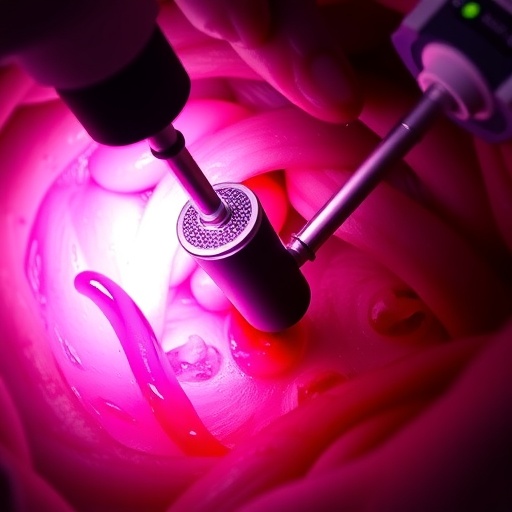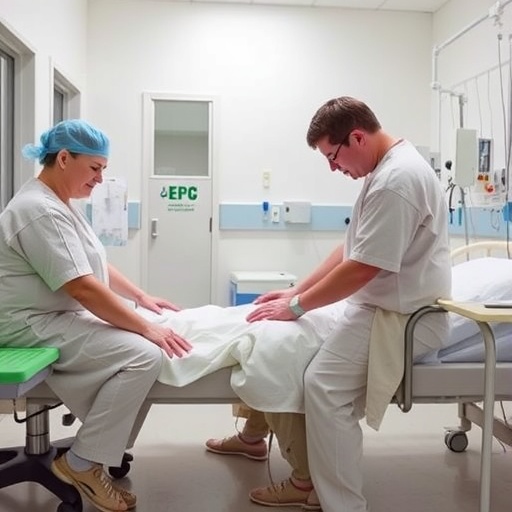In a groundbreaking study, researchers from China have introduced an innovative approach for estimating tibial fracture healing by leveraging advanced machine learning techniques. This research opens new doors in the field of orthopedic medicine by providing a more precise and efficient methodology for evaluating healing processes after surgical procedures, specifically intramedullary nailing. Intramedullary nailing is a common technique used to stabilize fractures of the long bones, particularly the tibia, where the recovery process can vary significantly from patient to patient.
The research centers on a novel framework known as mRUST, which stands for “Machine learning for Real-time Updates on Surgical Treatments.” This framework utilizes a Deep Forest Model, an ensemble learning method that aims to improve prediction accuracy. The integration of deep learning with traditional machine learning methods allows clinicians to analyze complex datasets more effectively, thus enhancing decision-making in treatment procedures. This approach not only seeks to optimize current healing assessments but also aims to personalize recovery protocols tailored to individual patients.
One of the standout features of this study is the use of a genetically optimized wearable sensor layout. These sensors are designed to continuously monitor key physiological parameters during the healing process. By collecting real-time data, the research team can feed this information into the mRUST model, significantly increasing the accuracy of healing predictions. The sensors can track things such as temperature, pressure, and motion, which play crucial roles in understanding how well the bone is healing post-surgery.
The methodology involves an extensive data collection phase, where the wearable sensors gather numerous data points from patients who have undergone intramedullary nailing. This data is then standardized before being analyzed using the machine learning framework. The model incorporates various factors such as age, weight, activity level, and the extent of the fracture. This comprehensive analysis allows for a holistic understanding of each patient’s healing trajectory, which is a major advancement over traditional one-size-fits-all approaches.
In their findings, the researchers highlighted that conventional methods of assessing fracture healing often rely exclusively on radiological assessments, which can be subjective and may not adequately reflect ongoing physiological changes at the fracture site. By employing the mRUST model, the researchers could provide quantifiable and objective metrics regarding the status of healing. This not only enhances accuracy but also contributes to a sense of transparency in the patient care process, as patients can be informed about their healing progress backed by tangible data.
A significant advantage of this research is the potential for early detection of complications. Complications such as non-union or malunion of fractures can severely impact patient outcomes, often leading to additional surgeries. The mRUST model’s continuous monitoring and real-time data analysis can alert clinicians to deviations from expected healing patterns, allowing for prompt interventions that could mitigate more serious issues later on.
The significance of the genetic optimization of the wearable sensor layout should not be understated. By utilizing advanced algorithms, the sensor placement can be customized per patient, enhancing both comfort and data collection efficacy. This optimization ensures that the sensors accurately capture relevant data without intruding upon the patient’s daily activities or interfering with their recovery process. The study outlines how patient-centric design can enhance compliance, leading to higher quality data and better health outcomes.
This research also underscores the collaborative nature of modern scientific endeavors. The interdisciplinary team, comprised of experts in biomedicine, data science, and engineering, illustrates how collective expertise can lead to innovative solutions in healthcare. Their combined knowledge allowed them to overcome significant technical challenges involved in developing and deploying the wearable sensors, as well as in fine-tuning the machine learning algorithms.
As the study progresses towards clinical trials, the potential for widespread application of mRUST could revolutionize orthopedic practices not only in China but worldwide. Medical professionals are increasingly recognizing the importance of integrating technology into clinical settings to enhance patient care. The ability to provide real-time updates and evidence-based assessments can significantly empower both healthcare providers and patients alike in managing recovery and rehabilitation.
In conclusion, the mRUST model represents a significant advancement in orthopedic healing assessments. Its integration of deep learning algorithms and wearable technology could pave the way for more personalized, effective, and efficient treatments for tibial fractures. As this innovative approach continues to evolve, the implications for orthopedic surgery and recovery protocols are vast. Should this research successfully transition into clinical practice, it could indeed set a new standard for patient care in fracture management.
The team’s next steps will involve further validation of their model through larger patient cohorts and additional testing to confirm the reliability of the predictions. They anticipate that with continued enhancements in sensor technology and machine learning, the future of orthopedic healing assessments will be more precise, personalized, and, ultimately, more effective in ensuring positive patient outcomes.
Subject of Research: Tibial fracture healing assessment using machine learning and wearable sensors.
Article Title: mRUST Estimation of Tibial Fracture Healing After Intramedullary Nailing Using Deep Forest Model with a Genetically Optimized Wearable Sensor Layout.
Article References:
Chen, W., Gong, M., Pu, F. et al. mRUST Estimation of Tibial Fracture Healing After Intramedullary Nailing Using Deep Forest Model with a Genetically Optimized Wearable Sensor Layout.
Ann Biomed Eng (2025). https://doi.org/10.1007/s10439-025-03873-1
Image Credits: AI Generated
DOI:
Keywords: mRUST, tibial fracture healing, deep learning, wearable sensors, machine learning, intramedullary nailing, orthopedic medicine.
Tags: advanced fracture healing assessmentDeep Forest Model in healthcareensemble learning in medicineimproving prediction accuracy in healthcareintramedullary nailing recoverymachine learning in orthopedic medicinemRUST framework for treatment updatesorthopedic surgery innovationspersonalized recovery protocolsreal-time physiological monitoringtibial fracture healing estimationwearable sensors for health monitoring





